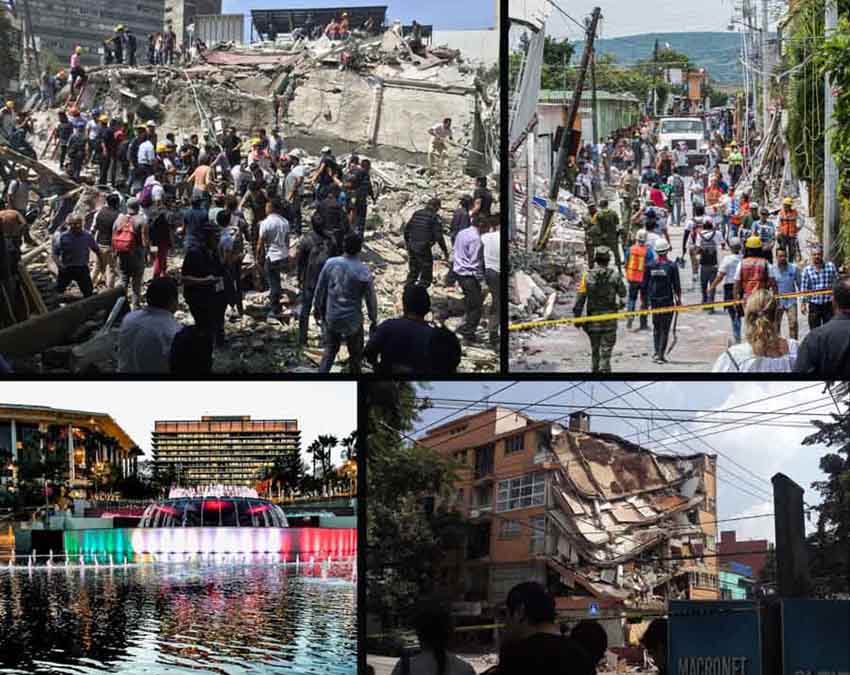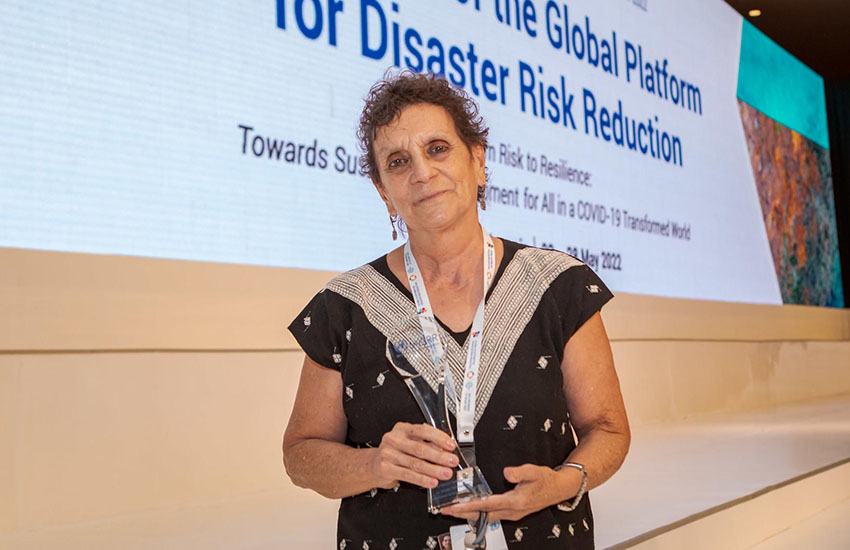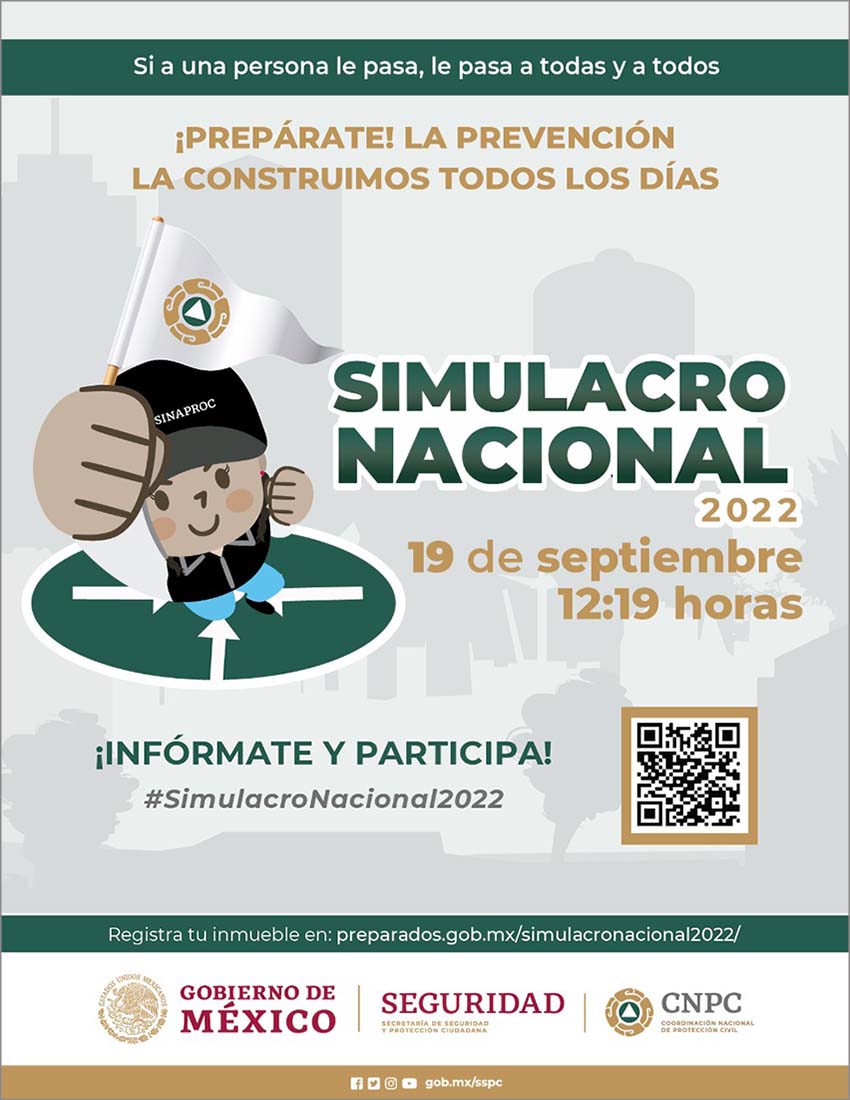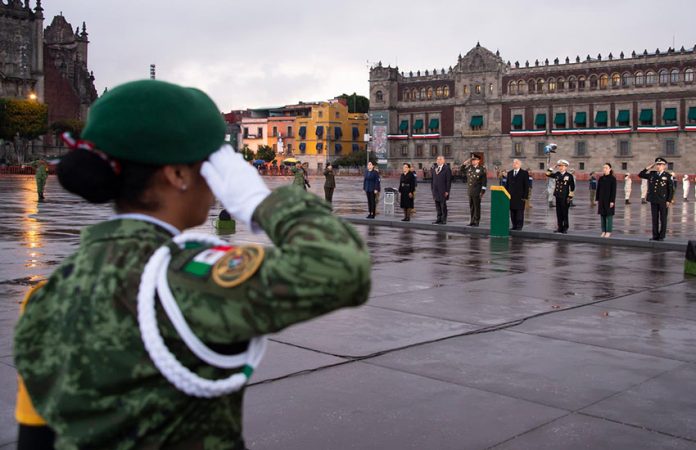An earthquake drill will be held in Mexico City and eight states this Monday, September 19, the fifth anniversary of a powerful 7.1 magnitude temblor that shook central Mexico and the 37th anniversary of an 8.1 magnitude quake that devastated the capital.
The simulacro nacional, or national drill, will commence at 12:19 p.m. Central Time in Mexico City, México state, Michoacán, Guerrero, Tlaxcala, Puebla, Morelos, Oaxaca and Chiapas. All nine entities are particularly prone to seismic activity.
The capital’s earthquake alarm will ring out from almost 14,000 loudspeakers, alerting residents to the imminent arrival of – in this case hypothetical – seismic waves. Alarms will also sound in areas of other states where earthquake alert systems are in place.
Organized by Civil Protection authorities, the drill will assume an 8.1 magnitude quake with an epicenter off the coast of Michoacán. The National Seismological Service (SSN) said in a statement that the characteristics of the mock quake – its magnitude and epicenter – were derived from the 1985 temblor, which claimed thousands of lives in Mexico City.

“Drills remind us that Mexico is a seismically active country and allow us to practice Civil Protection recommendations with regard to what to do before, during and after an earthquake,” the SSN said.
Myriam Urzúa, Mexico City’s minister for risk management and civil protection, emphasized the importance of carrying out the simulacro, which in 2017 preceded the real deal by just two hours.
“We live in a city where earthquakes occur practically every day so we have to prepare citizens,” she said.
Workplaces and schools, among other places, have safety representatives who will lead Monday’s drill, directing others to evacuate or take other appropriate safety measures.

The National Disaster Prevention Center (Cenapred) advises citizens to prepare a “family civil protection plan” for earthquakes, organize and participate in evacuation drills and “identify safe areas” in their homes, schools and workplaces. Among other advice, it encourages citizens to prepare an “emergency backpack” with items such as a torch, first aid kit, two-way radio, water, non-perishable food, warm clothing, medications and photocopies of important documents.
During earthquakes, Cenapred advises citizens to remain calm and move away from objects, buildings, trees and electrical posts that could fall. Those who live near the ocean should move away from the coast due to the risk of tsunamis.
In addition to the aforesaid 1985 and 2017 earthquakes, there have been three other temblors of magnitude 7 or greater in the month of September since 1985, Cenapred said in a statement Monday.
One was a powerful aftershock of the 1985 quake, while an 8.2 magnitude earthquake at 11:49 p.m. on September 7, 2017 – 12 days before that which claimed hundreds of lives in central Mexico – caused significant damage in southern Mexico and killed almost 100 people. The other major September earthquake of the past 37 years was a 7.1 quake in Guerrero just over a year ago that claimed one life but didn’t cause major damage.

Seismic events of lower intensity occur frequently in Mexico, especially in southern states with a Pacific coast, such as Chiapas, Oaxaca and Guerrero. On Monday morning, for example, there was a 4.4 magnitude quake with an epicenter 50 kilometers south of Ciudad Hidalgo, Chiapas; a 3.8 magnitude quake in Oaxaca, with an epicenter 55 kilometers of Salina Cruz; and numerous other smaller shocks.
The frequency with which the SSN’s Twitter feed is updated with information about recent quakes and tremors underscores the constant risk Mexico faces, and serves as a reminder that the next “big one” could occur at any time.
With reports from El Universal, El Financiero and Excélsior
